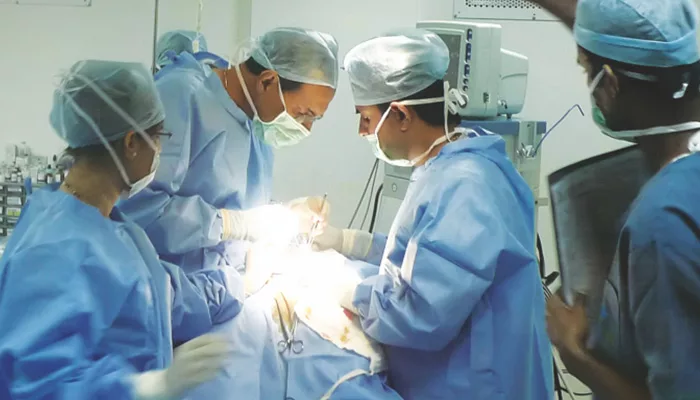Laparoscopic Surgery: Purpose, Procedure, and Benefits
May 16, 2019
Laparoscopic surgery, also called diagnostic laparoscopy, is a minimally invasive, low-risk procedure involving multiple small incisions. This diagnostic and surgical procedure is used for examination of abdominal organs.
The name of the surgery is derived from the instrument used for performing the procedure- a laparoscope. This medical instrument features a small video camera with a light on it. The surgeon makes small cuts and inserts the laparoscope into the body. The surgeon can look at the display to get an idea of what’s wrong.
If a laparoscope isn’t used, the surgeon would have to make a significantly larger cut to examine the internal organs. Since there are minimal cuts involved, it is always preferable to opt for open surgeries. Initially, laparoscopic surgeries were used for gynecology operations and gallbladder surgery. Thereafter, the procedure has been used for surgeries related to liver, intestines and other organs.
Purpose of Laparoscopic surgery
More frequently, laparoscopy is used for identification and diagnosis of abdominal or pelvic pain. It is an option that is considered when other non-invasive procedures aren’t being helpful with the diagnosis. In several cases, problems related to the abdomen can be diagnosed with the help of imaging techniques like:
- CT scan: This technique makes use of special X-rays for taking cross-sectional images of the body
- Ultrasound: With this technique, images of the body are formed with the help of high-frequency sound waves
- MRI scan: The images are produced with the help of radio waves and magnets
When these tests fail to provide sufficient insight or information to perform a diagnosis, laparoscopic diagnosis is used. Laparoscopy can be utilized for taking a biopsy, or a tissue sample, from specific abdominal organs. The procedure may be recommended by your doctor for examining organs like:
- gallbladder
- appendix
- pancreas
- liver
- small intestine
- large intestine (colon)
- stomach
- spleen
- pelvis
- reproductive organs
With the help of a laparoscope, the doctor can observe the necessary area for detecting:
- A tumor or growth of mass in the abdominal region
- Fluid in the abdominal cavity
- Degree of the progress of a specific cancer
- How effective a particular treatment is
After the diagnosis, the surgeon can perform interventions for treating your condition.
Laparoscopic surgery Procedure
Laparoscopy is primarily is a diagnostic process, although it can be used for performing treatment surgeries as well. During the procedure, the surgeon makes use of a thin device with a camera and light attached to it. The device, or laparoscope, is used for visualizing the disease or damage to the concerned organs.
As a part of the procedure, small incisions are made in the abdomen before the laparoscope is inserted into the body. Thereafter, a catheter is used for getting clearer images of abdominal and pelvic organs.
In certain situations, extra surgical equipment might be used by surgeons for supporting the procedure. Such equipment can be inserted through the areas of the incision. The patient undergoing the surgery can expect roughly four small cuts to be made in the abdominal area.
The surgeon might also make use of uterine manipulator and insert it into the vagina, uterus, and cervix to aid the movement of pelvic organs. This will allow them to see different anatomy of the pelvis.
After completing the procedure, the medical professional shall remove all instruments and most of the CO2 from the abdomen. The incisions are closed by stitching and covering the concerned area with bandages. The patient is likely to feel nausea or tiredness because of the use of anesthesia.
In most cases, the patient is discharged on the very day surgery is performed. However, for some patients, hospitalization might be required for allowing complete recovery. For example, laparoscopic hysterectomy, the procedure that removes the uterus, may require longer recovery time.
Benefits
As compared to traditional surgical options, a laparoscopy offers multiple benefits, primarily because it requires fewer incisions. Some of these benefits include
- The scars are smaller
- The patient gets discharged from the hospital faster
- The scars heal more rapidly and there is less pain involved during the healing
- The patient can return to regular activities sooner
- Internal scarring is comparatively less.
In the case of conventional methods, the recovery time is usually high. Also, with shorter hospital stay in case of laparoscopy, the cost for stay is reduced.
NOTICE BOARD
CONTACT US
CONTACT US
 Book Appointment
Book Appointment


.svg)
.svg)
.svg)
.svg)








